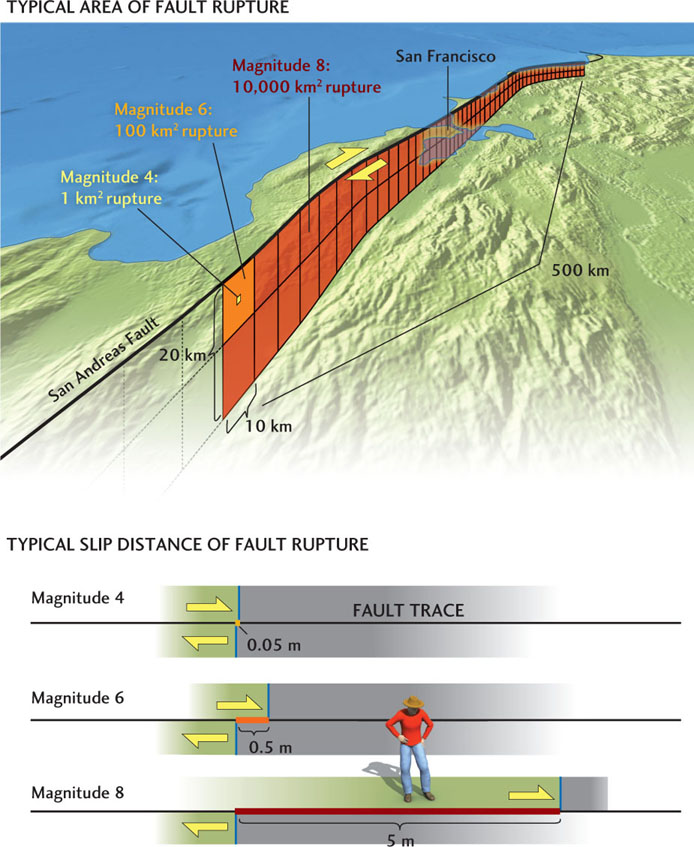Practicing Geology Exercise
Can Earthquakes Be Controlled?
Earthquakes of magnitude 4 rarely result in much damage to nearby communities, whereas quakes of magnitude 8 can be incredibly destructive. Would it somehow be possible for humans to control the slip on a fault to keep earthquakes small?
Experiments in oil and gas fields have shown that small earthquakes can be caused by injecting water or other fluids into fault zones through deep drill holes. The fluid lubricates the fault, reducing the friction that keeps it from slipping. Pump and pop! You get an earthquake. Why not control the sizes of earthquakes by using this fluid injection technique to release energy on a fault only in ruptures smaller than magnitude 4?

380
The feasibility of this method depends on how many events of magnitude 4 would produce the same fault slip over the same area as one event of magnitude 8. From observations of many earthquakes, seismologists have discovered two simple rules about moment magnitude that can guide this calculation:
- 1. Area rule: The area of faulting increases by a factor of 10 for each unit of moment magnitude. Therefore, a magnitude 8 rupture has 10,000 times the area of a magnitude 4 rupture (because 10(8−4) = 104).
- 2. Slip rule: The average slip of a fault rupture increases by a factor of 10 for each two units of moment magnitude. Therefore, the slip of a magnitude 8 rupture is 100 times that of a magnitude 4 rupture (because 10(8−4)/2 = 102).
The area of a magnitude 8 rupture is typically about 10,000 km2, and the average slip is about 5 meters per event.
 The area rule implies that the area of a magnitude 4 rupture will be 10,000 times smaller than that of a magnitude 8 rupture, or 1 km2.
The area rule implies that the area of a magnitude 4 rupture will be 10,000 times smaller than that of a magnitude 8 rupture, or 1 km2. The slip rule implies that the slip of a magnitude 4 rupture will be 100 times smaller than the slip of a magnitude 8 rupture, or 0.05 m (5 cm).
The slip rule implies that the slip of a magnitude 4 rupture will be 100 times smaller than the slip of a magnitude 8 rupture, or 0.05 m (5 cm).
Therefore, the number of magnitude 4 events needed to equal a single magnitude 8 event is
10,000 × 100 = 1,000,000
This calculation shows that small earthquakes don’t add up to much of the displacement that occurs across a fault; the big ones are what really count. On a fault like the San Andreas, which has earthquakes of nearly magnitude 8 every 100 years or so, we would have to generate magnitude 4 earthquakes at a rate of almost 10,000 per year to take up the same amount of fault movement.
Injecting faults with fluids to increase the rate of small earthquakes would be a bad idea for at least two reasons. It would be prohibitively expensive: drilling thousands of holes along the fault and pumping all that water down to earthquake focal depths would cost billions of dollars. It would also be dangerous: one of the ruptures induced by the fluid injection could become a much larger earthquake than intended. An effort to control earthquakes could end up causing a big one!
BONUS PROBLEM: How many magnitude 4 earthquakes would provide the same slip over the same area as one magnitude 6 earthquake?